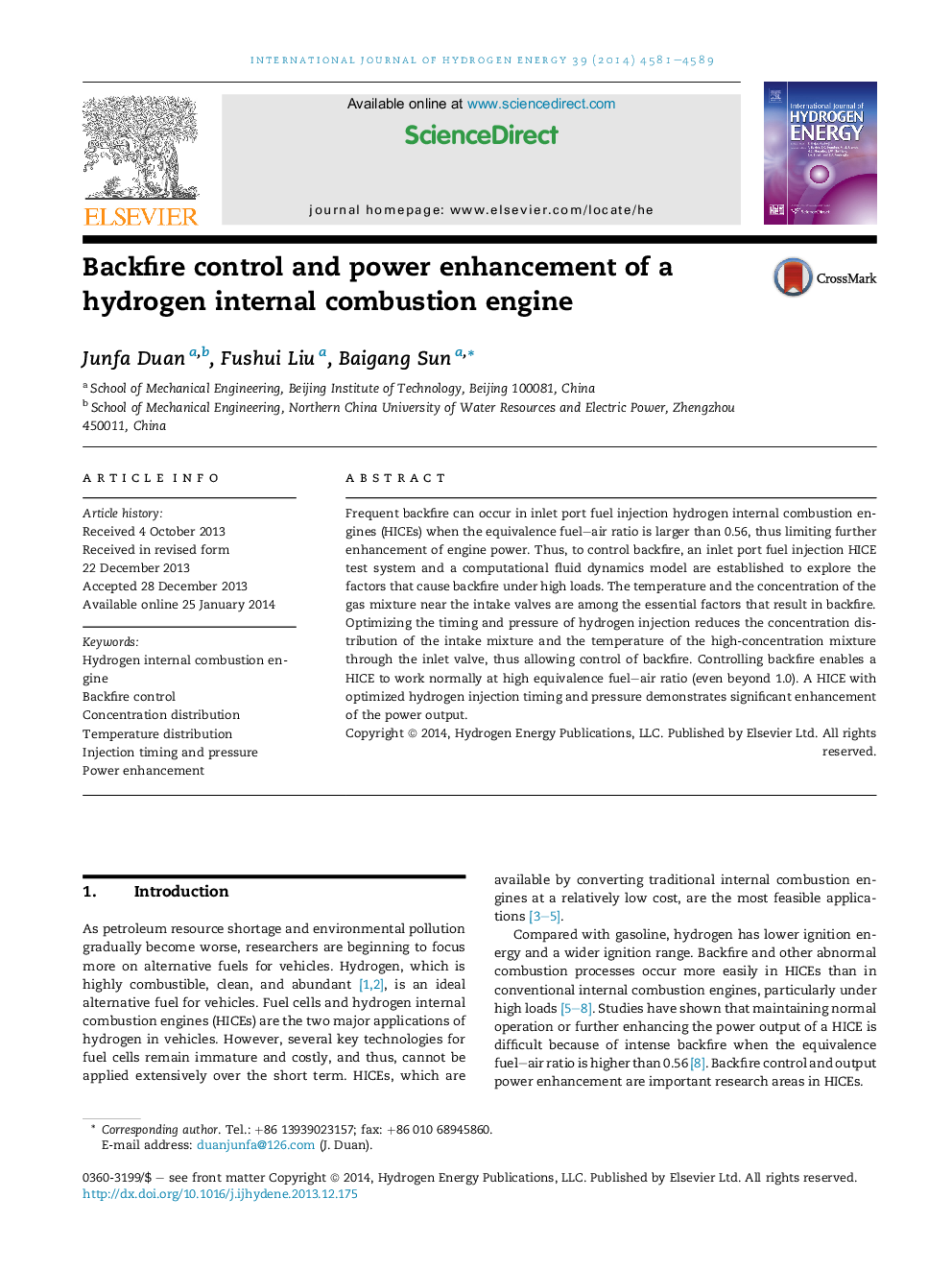| Article ID | Journal | Published Year | Pages | File Type |
|---|---|---|---|---|
| 1270547 | International Journal of Hydrogen Energy | 2014 | 9 Pages |
•Concentration and temperature distribution are essential factors of backfire.•Backfire can be removed by optimizing the hydrogen injection timing and pressure.•Optimization of hydrogen injection timing and pressure can improve engine power.
Frequent backfire can occur in inlet port fuel injection hydrogen internal combustion engines (HICEs) when the equivalence fuel–air ratio is larger than 0.56, thus limiting further enhancement of engine power. Thus, to control backfire, an inlet port fuel injection HICE test system and a computational fluid dynamics model are established to explore the factors that cause backfire under high loads. The temperature and the concentration of the gas mixture near the intake valves are among the essential factors that result in backfire. Optimizing the timing and pressure of hydrogen injection reduces the concentration distribution of the intake mixture and the temperature of the high-concentration mixture through the inlet valve, thus allowing control of backfire. Controlling backfire enables a HICE to work normally at high equivalence fuel–air ratio (even beyond 1.0). A HICE with optimized hydrogen injection timing and pressure demonstrates significant enhancement of the power output.
Graphical abstractConcentration distribution is an essential factor of backfire. If hydrogen injection starts too early, the high concentration mixture gathers around the intake valve. When the intake valve opens, the backflow high-temperature exhaust gas can ignite the mixture, thereby causing backfire (as illustrated in the graph below).Figure optionsDownload full-size imageDownload as PowerPoint slide
